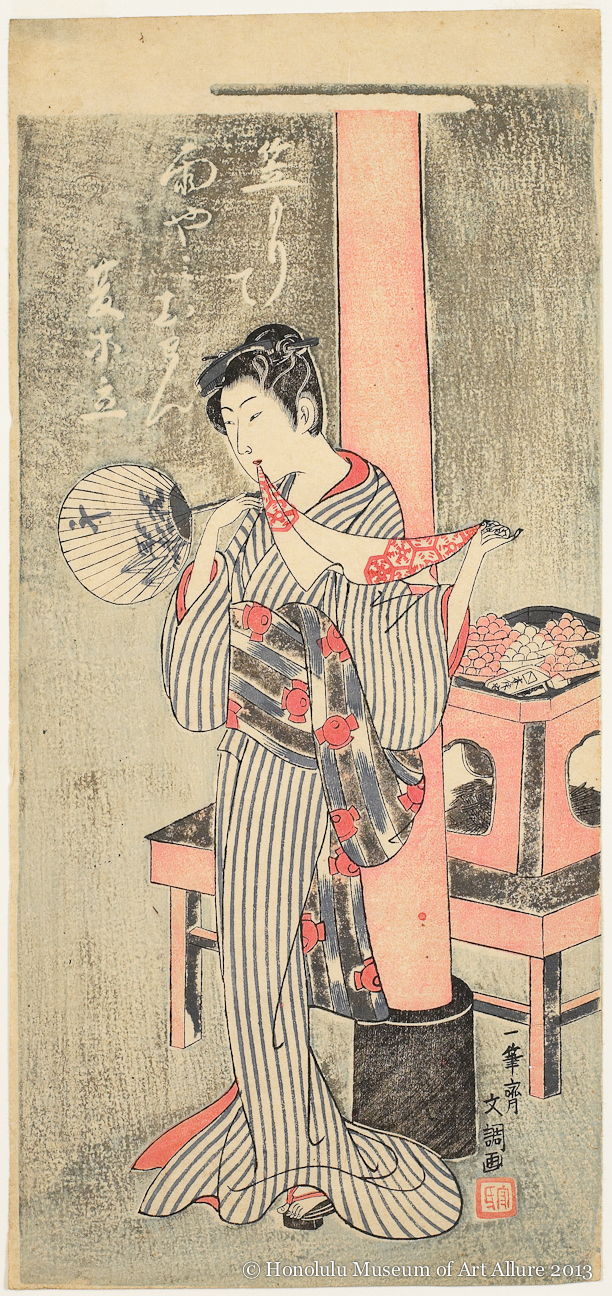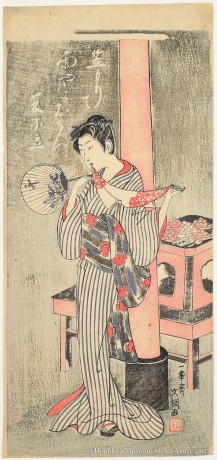Ippitsusai Bunchō (active c. 1755-1790)
Osen of Kasamori Shrine
Japan, Edo period, c. 1770
Woodblock print; ink and color on paper
Gift of James A. Michener, 1991
Honolulu Museum of Art
(21567)
The Kagiya teahouse with which Osen was associated was located near Kasamori Shrine, and a visit to the shrine often was combined with a stop at the Kagiya. One derivation of the name of the shrine attributes it to the phrase “to protect” (mamoru) against “scars” (kasa).
Inari, the fox god of the shrine, was believed to guard against smallpox and other disfiguring diseases like syphilis (brought by the Portuguese in the 16th century, and a common problem in the brothels, with which teahouses were commonly connected). Those afflicted would make symbolic clay offerings to the god in the shape of rice balls (his favorite food), and once healed, they would follow-up with real rice balls covered with white flour (representing a clear complexion).
These rice balls must have provided a lucrative business for the Kagiya, and Osen is sometimes shown bearing a tray of them (see Osen of the Kagiya Teahouse on display nearby).
The poem at the top reads:
At Kasamori the rain ceases,
Osen stands in the summer shade.
View info on museum database (enabled through support by the Robert F. Lange Foundation)


